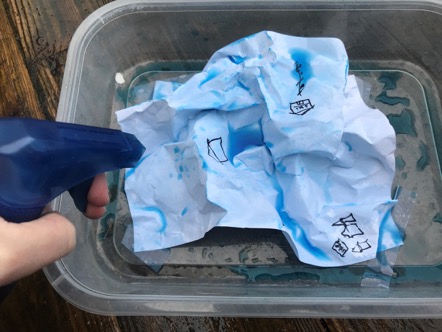Submitted by South Sound GREEN
In the face of COVID-19 and recent stay at home order, parents and guardians may find themselves looking for activities that not only keep students engaged, but also provide information about local environmental science and concerns. In our South Sound GREEN Home Based Science Project series, we will introduce and demonstrate various hands-on and at-home activities for children of all ages to do either indoors or outside!
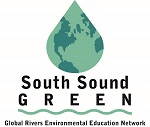 We start with Welcome to the Watershed, an introduction to what a watershed is and how landforms can move water differently over the landscape!
We start with Welcome to the Watershed, an introduction to what a watershed is and how landforms can move water differently over the landscape!
Welcome to the Watershed
Grade level: K-5
Materials:
- Clay or paper
- Cookie sheet or shallow dish
- Spray bottle with water
- Markers/crayons
- Food coloring
- Optional: Small figurines, animals, cars, houses, trees, etc. (search your toybox or borrow from board games in your house!)
Background information
Everyone lives in a watershed! Watersheds are the area of land that collects water, kind of like a bathtub. When water falls on a watershed, it collects in ponds and rivers, eventually making its way to Puget Sound or the Pacific Ocean. Watersheds are often named after the main body of water (i.e. water in the Deschutes Watershed collects in the Deschutes River system). You can learn more about what a watershed is by watching this video!
Want to know which watershed you live in? Click here for a map of the watersheds in Thurston County, or visit our website for more information about the watersheds of South Puget Sound!
Watersheds are made up of high and low areas. In this activity, you will build your own watershed complete with tall mountains, low valleys, houses, roads or whatever you want. It’s up to you!
Here’s the Procedure
- First, use a cookie sheet or shallow dish to contain your watershed. This will keep your table clean and dry!
Using clay: If you have clay available, use it to mold the landscape or topography. Clay tools like plastic knives, forks, spoons and toothpicks can help you add details to your landscape.
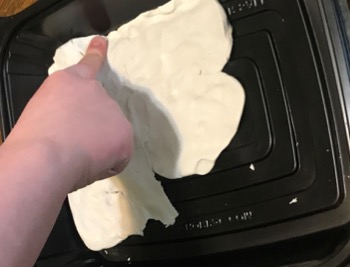
Using paper: Crumple an 8.5×11 piece of paper into a ball in your hands. Carefully unfold the paper and tape the corners down onto the cookie sheet.
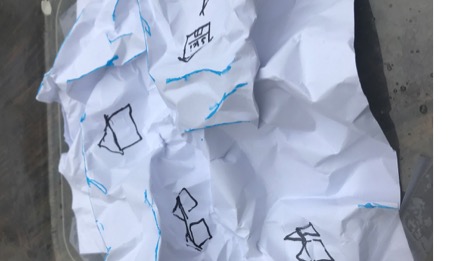
You should be able to see the drainage divide, or the high ridges that separate which way the water drains as runoff.
- After you have completed the landscape, start adding items to your watershed using figurines in the clay model, or crayons/markers to draw them in using the paper model. Where would you put a house? Where would your dog play? Where do the cars drive?
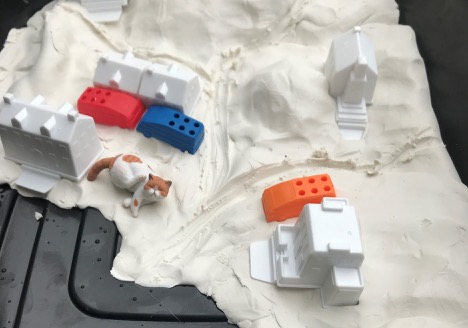
- Next, fill a spray bottle with water (add food coloring if you have it) and make precipitation (or rain) on your watershed! Watch how the water moves, and where it collects. Where do you see rivers? Where do you see ponds and lakes?
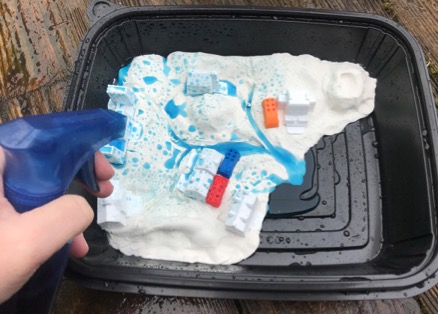
- Finally, after making your observations, think about where you put your houses, cars and other items around in the watershed. Move them around if you want, to help keep the water clean, and help keep your items dry!
Vocabulary:
- Watershed: an area of land that separates waters flowing to different rivers, basins, or seas.
- Topography: the shapes and features of land surfaces
- Drainage divide: a divide or ridge that separates neighboring drainage basins
- Precipitation: the quantity of water falling to earth
- Runoff: water that drains freely off of a surface
Keep Learning!
Here are some things you can do to keep learning about your watershed:
- Post a watershed picture on Instagram, with the tag #greenfromhome or @southsoundgreen
- Explore the Thurston County watershed maps at Thurston Geo Data
- Learn about Lidar (3-D laser scanning of the earth) by visiting the Department of Natural Resources website
South Sound GREEN (Global Rivers Environmental Education Network) is a watershed education program in Thurston County that educates, empowers and connects thousands of local students in watershed studies annually. Through South Sound GREEN, participants engage in science and engineering practices related to water quality in South Sound. For more information, visit the South Sound GREEN website.






































